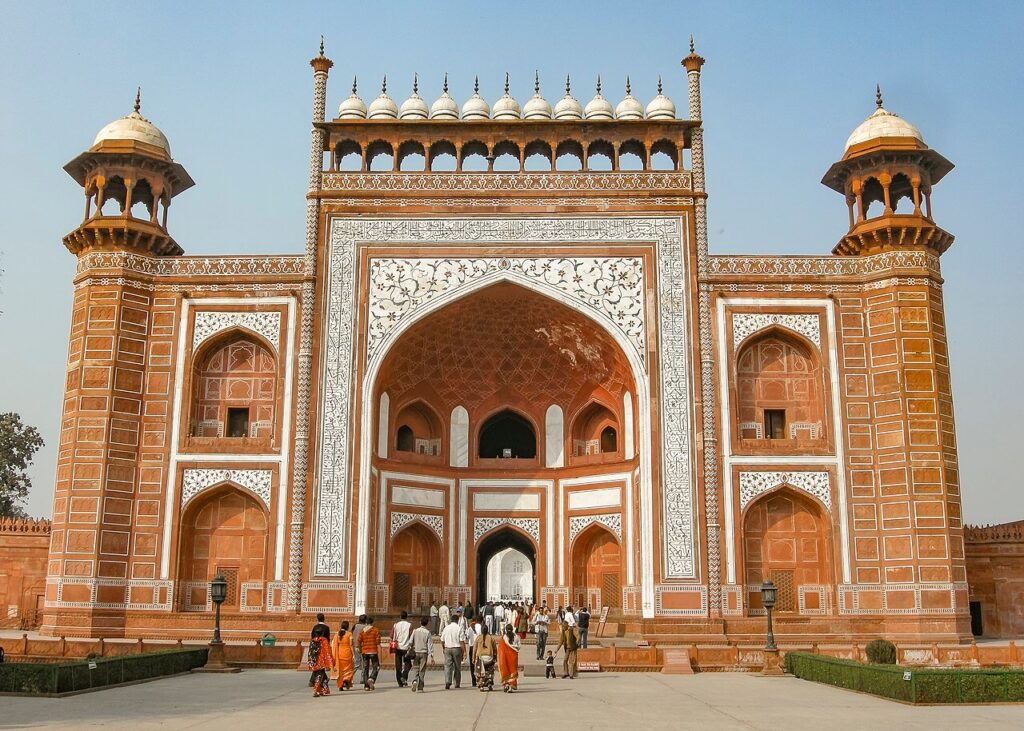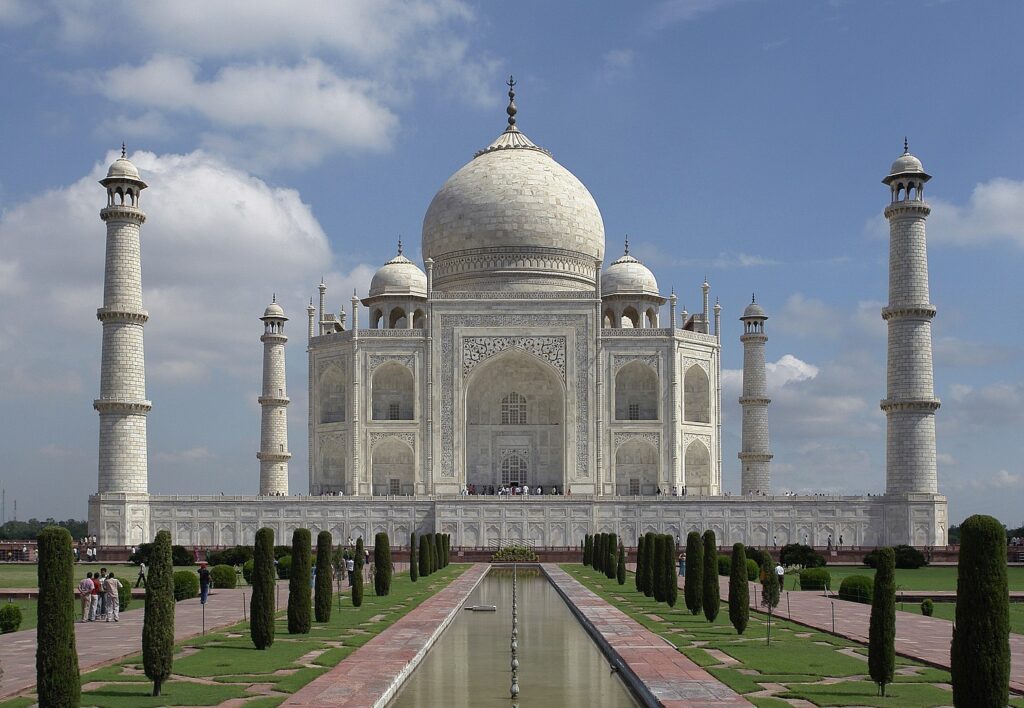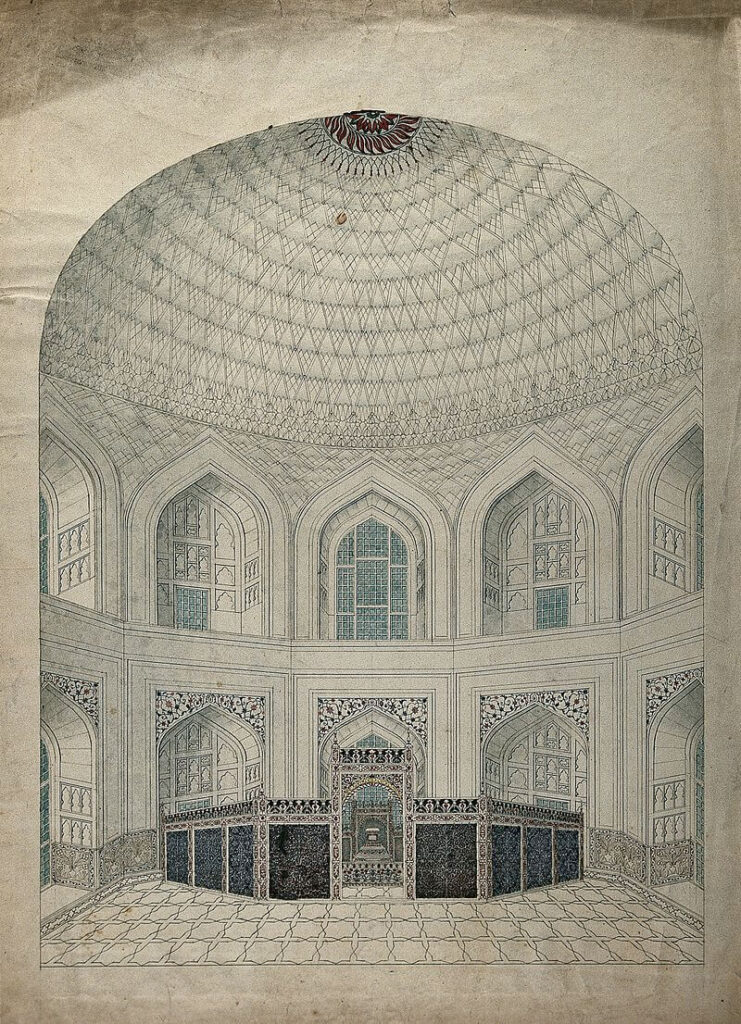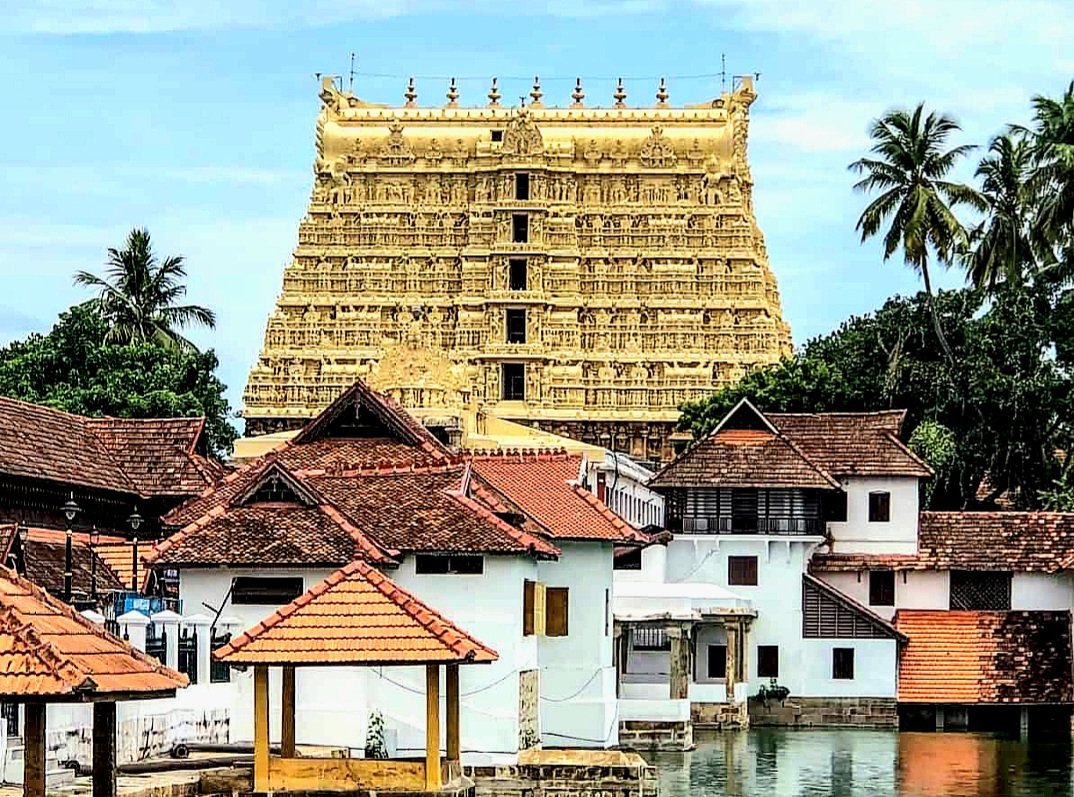Taj Mahal, an iconic symbol of India’s rich cultural heritage, stands gracefully on the right bank of the Yamuna River within a vast Mughal garden in Agra, Uttar Pradesh. Commissioned by the Mughal Emperor Shah Jahan in memory of his beloved wife Mumtaz Mahal, this monumental structure is a testament to the sublime fusion of Indo-Islamic architectural styles. Construction began in 1632 AD and culminated in 1648 AD, with subsequent additions and completion in 1653 AD, resulting in a harmonious blend of solids, voids, arches, and domes that exude unparalleled aesthetic beauty.
Table of Contents
ToggleTaj Mahal: A poem made of love
The Construction:
Ustad-Ahmad Lahori, the chief architect, orchestrated the intricate collaboration of masons, stone-cutters, inlayers, carvers, painters, and other artisans hailing from diverse regions, including Central Asia and Iran. The majestic structure stands as an architectural marvel, flaunting its meticulous blend of solids and voids, concave and convex forms, and interplay of light and shadow. Its symphony of arches, domes, and courtyards further amplifies its enchanting allure.
The Artistry of Details:
The Taj Mahal’s allure extends beyond its imposing form, as it beckons visitors with an ever-changing spectacle of colors—lush green landscapes, reddish pathways, and the blue sky above. The marble relief work and intricate inlay, adorned with precious and semi-precious stones, transform the monument into a masterpiece of craftsmanship. The fusion of intricate design and impeccable execution stands as a testimony to the artisans’ dedication and creativity.
Innovations in Horticulture and Design:
Shah Jahan’s visionary horticulture planners and architects crafted ingenious design elements that set the Taj Mahal apart. One remarkable feat was the deliberate offset placement of the tomb within the quadripartite garden, enriching distant views with depth and perspective. The elevated tomb platform, with its octagonal base extending beyond the square at each corner, further accentuates its grandeur. The tomb’s symmetrical layout, balanced composition, and meticulously executed details demonstrate the architects’ unwavering dedication to perfection.
Under Standing the Cenotaphs and Intricate Lattice Work:
The heart of the monument houses the cenotaphs of Mumtaz Mahal and Shah Jahan. The finely carved octagonal lattice screens, enriched with inlay work and precious stones, encircle the cenotaphs, creating an ethereal atmosphere. The tomb’s design elevates Mumtaz Mahal’s cenotaph at its center, while Shah Jahan’s cenotaph, installed over three decades later, stands beside it. The intricate artistry and symbolism woven into these features attest to the profound emotions behind the monument’s creation.
The Towering Minarets:
The Taj Mahal’s innovation extends to its four freestanding minarets that provide not only spatial reference but also a mesmerizing three-dimensional effect. Rising gracefully from the platform’s corners, these minarets epitomize the Mughal architecture’s novel dimensions, enhancing the monument’s magnificence.
The Grand Gateway and Surrounding Gardens:

The Taj Mahal‘s grandeur is embraced by a majestic gateway, flanked by double arcade galleries. The meticulously designed garden, inspired by Timurid-Persian concepts, complements the central axis and symmetrical layout. Pavilions punctuate the enclosure walls, further enhancing the garden’s charm.
A Testament to Bilateral Symmetry:
The Taj Mahal stands as an epitome of perfect bilateral symmetry, with its main features meticulously placed along a central axis. Crafted from brick-in-lime mortar, adorned with red sandstone, marble, and intricate inlay work of precious and semi-precious stones, it exemplifies the pinnacle of Indo-Islamic artistry.
The Taj Mahal’s enduring allure lies not only in its majestic form and meticulous craftsmanship but also in the profound emotions and innovative design that breathe life into its stones. As a symbol of undying love and architectural genius, the Taj Mahal continues to captivate hearts and minds, transcending time and borders to stand as a testament to human creativity and devotion.








